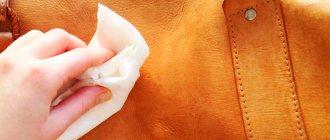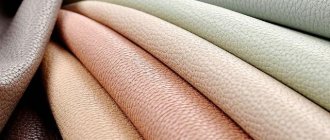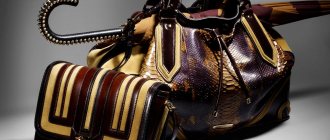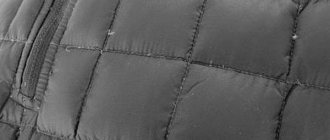Shoes are a wardrobe item that should perform not only a protective function (cold, dirt, shock absorption when walking), but also an aesthetic one. Agree, a well-groomed young lady or man loses his entire sophisticated image with unkempt shoes.
It's winter now. This winter has pleased us not only with severe frosts, but also with copious amounts of snow, which has already melted several times. In winter, streets and sidewalks are often sprinkled with salt to help melt ice quickly. As a result, pedestrians walk through snow, mud and salt slurry. And this snow-mud-salt slurry remains on our shoes as whitish stains. Therefore, any polished shoes lose their appearance (they wear out a lot) and tear.
How to properly wash leather shoes?
It is best to clean leather shoes with a soft cloth or sponge; hard brushes cause microcracks on the surface of the leather, which leads to cracks and rapid deterioration of the shoes. You should not wash your shoes in water; of course, the rag should be wet, but you should not “bathe” your boots or shoes in water.
Interesting materials:
How to delete an account in Sbis? How to delete your Skype account 2022? How to delete a Snapchat account from your phone? How to delete an account on social networks? How to delete an Xbox account on your phone? How to delete Google account on PC? How to delete the entire current one? How to delete the album Photos with me in OK? How to remove Alice Yandex from your phone? How to remove AMD Catalyst Install Manager Windows 10?
How to treat shoes so they don’t get wet: old man’s simple recipe for impregnating shoes
How to treat boots or shoes so that they do not get wet for a long time, and your feet remain dry and warm?! Today you will get acquainted with the best water-repellent impregnations for leather shoes - we protect your favorite shoes from leaking.
Your shoes, and especially your feet, will not be wet, and in winter they will never freeze if you treat your shoes or boots with this old-fashioned remedy.
Article on the topic: Toto shoes size 30 insole how many cm
Tested and tested on yourself, that is, on your shoes!
So take note and be prepared, especially for those people who are very often outdoors: fishing, hunting, hiking, digging and others.
Now in the comments they will start teaching me that everything has long been invented without dancing with a tambourine.
And that today you can buy a shoe impregnation product so that it doesn’t get wet for mere pennies.
But, firstly, for that kind of money you can buy “G” or it’s enough for one time. Secondly, if you take high-quality impregnation, it will cost you so much money that it’s better to buy new shoes...
- Reliable water-repellent impregnation for shoes - a folk old recipe so that shoes do not get wet and remain dry
- A way to protect leather shoes from getting wet is Vaseline.
- Another way to treat shoes that haven’t gotten wet is Castor Oil
- The third ancient method is water-repellent impregnation for shoes - Salo
- We protect shoes from leaks the old-fashioned way - Goose fat
Secrets for ladies
100 useful tips for caring for shoes at home. Is it possible to coat shoes with Vaseline, glycerin, and sunflower oil? How to dry shoes correctly, how to stretch shoes, how to clean stains from shoes at home and much more.
1. Drying shoes. Stuff the shoes (boots) with newsprint so that it absorbs excess moisture and leave to dry at room temperature. If the shoes are very wet, the newspaper can be changed several times.
2. If your shoes are dry, you can soften them by rubbing castor oil. Then polish the shoes.
3. A scrap of leather torn off from a shoe can be easily “grown back.” To do this, you need to lubricate the damaged area and its back side with a thin layer of nail polish or BF-2 glue and firmly press the treated area with your finger for several minutes.
4. The unpleasant smell of shoes can be eliminated by washing them with a solution of potassium permanganate (5-6 crystals per liter of water) and wiping them with hydrogen peroxide.
5. If the metal tips on your shoe laces have come off, dip the ends in nail polish. They will harden and fit easily into the holes.
6. Shoes can be made waterproof by lubricating them several times along the seams with linseed oil.
7. If the suede is shiny, try using a paste of potato flour and gasoline. After this, clean water, and then a weak vinegar solution.
8. Drying shoes. If you need to dry your boots urgently, you can use a vacuum cleaner. The air from the pipe is warm enough to dry the boot.
9. If your shoes are dry, you can soften them by rubbing vegetable oil. Then polish the shoes.
10. Black suede shoes are refreshed by smoking them over a burning candle.
11. Tight shoes can be stretched by stuffing them with damp newsprint.
12. If your shoes squeak, rub a few drops of vegetable or castor oil on the soles and let the shoes dry.
13. A worn-in shoe will not fall off the foot if a strip of velvet or foam rubber 5-6 mm thick is glued to the inner surface of the heel.
14. Light-colored shoes that have lost their appearance can be repainted black by rubbing them with cut raw potatoes, then greasing them with black cream and cleaning them until they shine.
15. To keep patent leather shoes better, their tops should be wiped with castor oil from time to time.
16. Suede shoes can be cleaned with the rough surface of a matchbox.
17. You can break in new shoes in this simple way: to do this, moisten the inside of the shoes with cologne, immediately put them on your feet (preferably with woolen socks, since they are thicker), and then lightly moisten the top with cologne.
18. If your shoes squeak, you can soak the soles with hot natural drying oil.
19. It happens that new shoes begin to “burn” your foot. This problem can be solved with 3% vinegar, which is rubbed into the shoes from the inside.
20. New shoes stain stockings; their inner surface should be treated with talcum powder.
21. If the shoes are tight in a particular place, you should drip heated wax on it and pull it on the last for several days. The desired area will stretch noticeably.
22. If patent leather shoes have lost their shine, they can be cured with Vaseline. After Vaseline, it is recommended to wipe the shoes with velvet cloth.
23. Any greasy stain on your suede shoes can be easily removed with gasoline.
24. Formalin is used to disinfect shoes: the inside of the shoes is wiped with a cloth soaked in formaldehyde, placed in a plastic bag, tied and left for a day. Then the shoes are taken out and aired.
25. If your shoes are dry, you can soften them by rubbing glycerin. After this, polish the shoes. Caring for your shoes this way will prevent your shoes from cracking.
26. Suede shoes can be cleaned well if held over steam.
27. To prevent shoes from getting wet, you can treat them with the following solution: dissolve 40 g of fish oil, 10 parts of wax, 3 parts of turpentine in a water bath. Apply the cream in liquid form.
28. Dry sports shoes can be kept in warm water until the leather becomes soft. Then you need to wipe it inside and out, dry it, lubricate it with glycerin and stuff it tightly with newsprint.
29. Suede shoes can be cleaned with a crust of stale bread.
30. A greasy stain on your suede shoes can be removed as follows: sprinkle the stain with talcum powder and leave for several hours.
31. White shoes with textile uppers are refreshed with tooth powder and water.
32. It is useful to rinse shoe brushes with water with the addition of ammonia.
33. If stains appear on colored shoes, they can be removed with a cloth soaked in lemon juice.
34. Suede shoes can be cleaned with sandpaper (carefully)
35. To keep patent leather shoes better, their tops should be wiped with milk from time to time.
36. Brown leather shoes can be cleaned well with coffee grounds.
37. To prevent wet leather shoes from hardening, rub them with Vaseline after they dry, and after a few hours clean them as usual.
38. If streaky spots have formed on the skin, wipe them with table vinegar.
39. White shoes retain their color if they are cleaned regularly with a mixture of milk (half a glass) and one beaten egg white.
40. To prevent patent leather shoes from warping, they should sometimes be lubricated with glycerin.
41. The sole and seams will not allow moisture to pass through if they are coated with a mixture of equal parts wax and lamb fat.
42. Work boots can be wiped several times with paraffin dissolved in gasoline.
43. Shoes can be made waterproof by lubricating them several times along the seams with castor oil.
44. Wash patent leather shoes with a cloth soaked in milk, and when they are dry, wipe them with half an onion and polish them with a soft woolen cloth.
45. Black suede shoes are refreshed by wiping them with carbon paper.
46. Suede shoes can be cleaned with a regular pencil or ink eraser.
47. “People's Cream” You can lubricate your boots with a piece of unsalted lard. And forward, in bad weather! Protection from water is very good; in cold weather, lard is also suitable as a softening agent.
48. White shoes with textile uppers are refreshed with chalk and water
49. Felt boots and felt boots, if they are very dirty, can be washed (but they may shrink), and after drying, clean them with pumice or fine-grained sandpaper. After drying, the remaining stains are removed with a slightly damp cloth.
50. It’s good to clean colored plastic boots with Vaseline: they shine, don’t burst or crack.
51. Boots will “grow up” if you put a strong plastic bag with water in them and place them in the freezer overnight. For 10 parts by volume of water you get 11 parts of ice, which will help increase the size of your shoes.
52. If you lubricate previously wet shoes with kerosene, they will become softer.
53. It is recommended to store boots with long tops hanging on clothespins.
54. If your shoes get very wet, you need to stuff them with dry hay.
55. Clean stains from yellow, brown or red leather shoes with soap and cold water.
56. Remove greasy stains on leather shoes with a soda solution (a teaspoon of soda in half a glass of water). Rub until foam forms, then remove it with a dry soft cloth.
57. It is best to wash white leather shoes with a foam sponge or soft brush dipped in a warm solution of washing powder. Rinse off the solution with warm water and dry your shoes.
58. If the suede is shiny, try removing the shine with a cloth soaked in hot water.
59. If your shoes press on your heel, you can soak a rag in the shoe and in the freezer. The rag freezes and stretches the shoes.
60. Wash shoes with textile uppers in soapy water with a small amount of ammonia (a teaspoon per glass of water), then wipe with a cloth soaked in clean water.
61. Ski boots are lubricated with ointment prepared from a mixture of 3 tbsp. spoons of fish oil and 1 spoon of castor oil. The ointment can be warmed up a little, then it is better absorbed into the skin.
62. “People's cream” Melt beeswax in a water bath, add turpentine and castor oil. Thoroughly rub the resulting ointment into the shoes - long-term shine and protection from water are guaranteed.
63. If the leather outsole allows water to pass through, it should be lubricated with warm drying oil until the outsole is saturated with it and will no longer absorb it. Drying oil, in addition, extends the service life of outsoles.
64. Before storing patent leather shoes for long-term storage, you should lightly wipe them with castor oil or pure glycerin.
65. Grease stains on leather shoes are removed with a soda solution (1 teaspoon of soda per glass of water). Rub until foam forms, then remove it with a dry soft cloth.
66. Wash insoles and periodically treat the inside of shoes with a solution of potassium permanganate
67. To prevent shoes from slipping, you can apply “Moment” glue from a tube in the form of a snake onto the soles of shoes that have been cleaned and wiped with acetone, and sprinkle coarse sand on the freshly applied glue and let the shoes dry for 24 hours. This procedure must be repeated periodically.
68. Suede absorbs water well and after drying retains its previous properties, but repeated wetting can cause it to harden somewhat. In this case, you need to knead it in your hands, in different directions, and it will become soft again.
69. If the suede is very hard, it should be soaked in a cold soapy solution, folded and left for 6-8 hours. After this, rinse in water to which you need to add a little ammonia.
70. You can renew suede gloves as follows: prepare a mixture by adding half a teaspoon of baking soda or the same amount of 10 percent ammonia to half a glass of skim milk. Put gloves on your hands and, moistening a cotton swab with the prepared mixture, wipe the contaminated area with it.
71. To make the hard heels of new shoes rub your feet less, wipe them with a candle.
72. Regular baking soda can save your shoes from smelling. You just pour baking soda into your shoes, and then, say, every other night, shake it out or suck it out with a vacuum cleaner. The only problem is that if you do this with black leather shoes, then later whitish stains may appear on them. So it’s best to clean with soda with light-colored sneakers.
73. Shoes can be stretched by pouring vodka into the shoes, and then walking around in them, wearing a wool sock
74. If the shoes are tight in a particular place, you should drip paraffin on it and pull it on the last for several days. The desired area will stretch noticeably.
75. If your shoes are dry, you can soften them by rubbing Vaseline. After this, polish the shoes. Caring for your shoes this way will prevent your shoes from cracking.
76. To get rid of stains and clean pores of excess cream, shoes (this does not apply to patent leather shoes) should be cleaned at least once a week with a rag soaked in gasoline.
77. Hydrogen peroxide will help get rid of unpleasant odors - wipe the inside of your shoes.
78. It is best to store patent leather shoes in covers made from old stockings.
79. Leather shoes should be washed with a soft cloth and soap.
80. Worn patent leather shoes will shine like new if you brush them with egg white.
81. Heavily soiled suede shoes can be easily cleaned with soapy water and a few drops of ammonia.
82. You can clean and bleach white suede with a mixture of a glass of warm water, adding a teaspoon of hydrogen peroxide and ammonia to it.
83. To get rid of stains and clean pores of excess cream, shoes (this does not apply to patent leather shoes) should be cleaned with turpentine at least once a week.
84. Stains on colored shoes can be easily cleaned with half an onion.
85. If your heel is pressing, you can gently tap the back of the shoe with a hammer.
86. To make the hard heels of new shoes rub your feet less, wipe them with damp soap.
87. Stains on white leather shoes can be removed with a soft rubber band.
88. Dried shoe polish can be restored by adding a few drops of turpentine and gently heating it.
89. To prevent your boots from slipping in icy conditions, rub their leather soles with coarse sandpaper or raw potatoes, and apply a relief pattern to the plastic ones with any well-heated metal rod.
90. If your shoes stain your stockings, you need to soak a piece of cotton wool with alcohol and wipe the lining with this swab several times.
91. It’s best to wash sneakers by hand, in soapy water.
92. Faux leather shoes can be cleaned with a damp cloth.
93. Dirt from the sole and heel can be removed using a damp flannel cloth.
94. It is recommended to put an insole made of cloth or flannel into rubber shoes to keep your feet dry and warm.
95. On soft natural leather, grease stains can be removed with a solution of oxalic acid. After this, the area of the former stain is treated with a piece of dry cloth and, if necessary, tinted with the appropriate dye.
96. It is recommended to soak shoes thoroughly washed with warm water with the following composition: pure fish oil is mixed with lard (in a ratio of 3:1). This potion is boiled until the ingredients are mixed. The cooled mixture is soaked into the raw skin and rubbed in with a cloth. Then prepare the second composition: 1/3 of a piece of laundry soap is heated in 1/3 cup of water until the soap is completely dissolved. The cooled mixture is used to cover shoes lubricated with the first mixture.
97. To give shoes a diamond shine, you can use a mixture prepared from one egg white, milk in the same volume and a lump of sugar. These ingredients are whipped until foam is obtained, applied to the surface of the skin using a sponge and left to dry. After this, wipe the shoes with cloth or woolen rags.
98. Shoes made of thick, rough leather can be greased by first wiping off the dirt with a damp cloth.
99. Heavily soiled white shoes are cleaned with gasoline, to which a little magnesia powder is added.
100. Heavily soiled suede shoes are cleaned with a brush soaked in heated soapy water. Ammonia is first added to the water in a ratio of 1:5 (one part alcohol to five parts water). Then rinse with cold, slightly acidified water (a teaspoon of vinegar is added per liter of water).
Read on: How to stretch and break in shoes.
Shoe zipper repair
Shoe care. Shoe cleaning.
To restore the functionality of plastic zippers, you need to unzip the zipper, moisten its teeth with an alcoholic rosin solution, let it dry for two hours, repeat this procedure regularly.
A metal zipper can be repaired by hammering it along its entire length from the outside and inside with gentle blows of a hammer. And then use pliers to reduce the gap between the upper and lower parts of the lock.
To avoid lowering the zipper on boots, sew a clothes hook to the edge of the tape at the top of the zipper. When the zipper is closed, the lock tongue is attached to the hook. You can increase the service life of a zipper by lubricating its fabric part with BF-6 glue.
Affordable ways to soften a leather jacket at home
If you do not want to feel discomfort when putting on a new leather jacket, it is better not to wear it immediately after purchase, but to use one of the methods that will help soften the new material. The jacket will need time for the leather to break in and fit on you.
This is especially true for men's rough jackets, whose cuffs and collars are much harder at first.
In order not to waste time and not torment yourself with an uncomfortable thing, without altering your leather jacket, treat it at home, making the leather softer and more pliable. If you don’t know how to properly make leather softer, contact the Mobile Tailor studio.
Vaseline oil
- Description
- Quality control
Dosage form
Oil for oral administration
Article on the topic: How to make soles for doll shoes
Compound:
liquid paraffin (vaseline oil).
Description
Colorless oily non-fluorescent liquid.
Pharmacotherapeutic group
ATX code : A06AA01.
Pharmacological properties
Softens feces; has a weak stimulating effect on intestinal motility. It is not absorbed when taken orally. The laxative effect occurs after 6-8 hours.
Indications for use
If necessary, please consult your doctor before using the medicine.
Contraindications
Hypersensitivity to the drug, acute inflammatory processes in the abdominal cavity, intestinal obstruction, intestinal bleeding, febrile syndrome, pregnancy.
Use during pregnancy and breastfeeding
During pregnancy, the use of the drug is contraindicated due to possible reflex stimulation of the uterus. During breastfeeding - possible.
Directions for use and doses
Orally, 1-2 tablespoons per day, 2 hours after meals. The course of treatment is no more than 5 days.
If there is no improvement after treatment, or new symptoms appear, you should consult your doctor. Use the drug only according to the method of use and in the doses indicated in the instructions. If necessary, please consult your doctor before using the medicine. You should contact your doctor if symptoms worsen or do not improve after 2-3 days of treatment.
Side effect
With long-term use - disruption of the digestive process, intestinal atony, hypovitaminosis A, E, K.
If any of the side effects listed in the instructions get worse, or you notice any other side effects not listed in the instructions, tell your doctor.
Overdose
Symptoms
: diarrhea, water-electrolyte imbalance.
Treatment
: symptomatic.
Interaction with other drugs
special instructions
The use of the drug in pregnant women is contraindicated due to possible reflex stimulation of the uterus. When ingested, petroleum jelly can pass through the anal sphincter and contaminate underwear.
It cannot be used as a laxative in case of poisoning with fat-soluble substances (phosphorus, benzene, etc.) and in the treatment of helminthic infestation with male fern extract.
Article on the topic: Why do leather shoes get wet?
Read the instructions carefully before you start using the drug. Save the instructions, you may need them again. If you have any questions, consult your doctor. The medicine you are using is intended for you personally and should not be given to others as it may cause harm to them even if they have the same symptoms as you.
Impact on the ability to drive vehicles and machinery
The drug does not affect the ability to drive vehicles or machinery.
Release form
Oil for oral administration.
25, 30, 40, 50, 100 ml in orange glass bottles with a screw neck with polyethylene stoppers and screw-on plastic caps.
Each bottle, along with instructions for medical use, is placed in a cardboard pack.
Storage conditions
In a place protected from light at a temperature not exceeding 25 ° C.
Keep out of the reach of children.
Best before date
Do not use after the expiration date stated on the packaging.
No more blisters!
When your shoes rub, it is impossible to remain in a good mood. This problem is especially relevant in the summer, when it’s time for open shoes with thin straps and fashionable seasonal new items that have not yet had time to “sit” on your feet.
If you are unlucky enough to rub your feet while walking, the calluses will cause discomfort with every step. Calluses can also lead to inflammation, because germs can get into the wound. Therefore, if you have a callus, act quickly and correctly.











